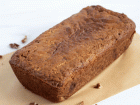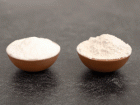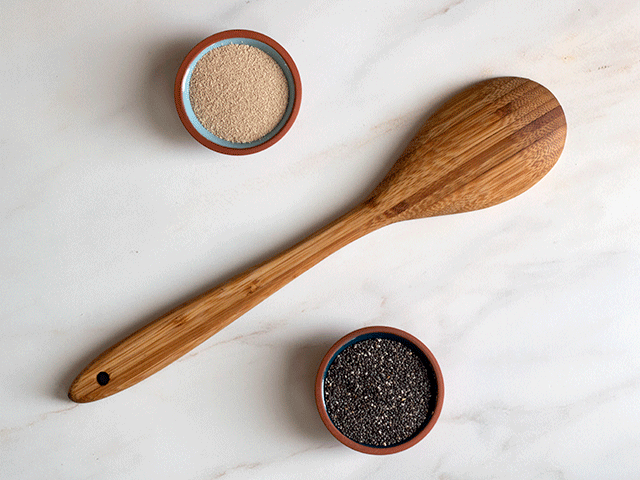
As a beginning baker, I tend to do a lot of Internet browsing for ideas. I skim Pinterest. Hop around Reddit. And search Google for recipes, techniques, and tips. Time and time again, I come across baker’s percentages for recipes rather than recipes themselves.
At first, this confused me. I like a straightforward recipe. Give me the number of grams for each ingredient. Tell me how long to mix them or let them rise. And I’m good to go. Please don’t make me do the math.
But the more I learn about baking, the more I understand the value that baker’s percentages have to offer.
Why Use Baker’s Percentages?
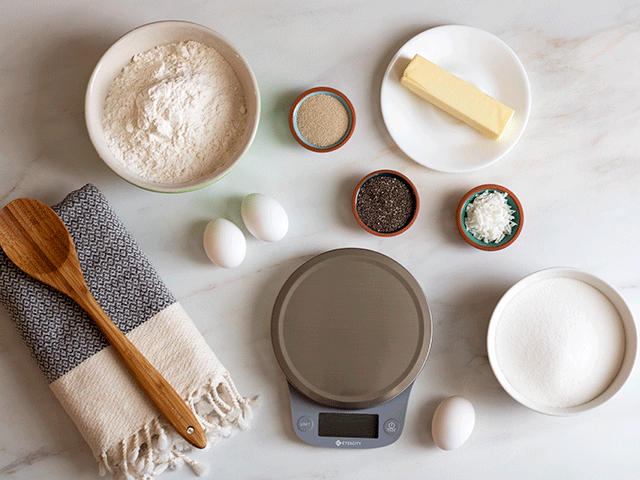
Instead of listing grams per ingredient in a recipe, baker’s percentages list each ingredient as a percentage of flour weight. Flour weight itself is almost always listed as 100%.
With this method, bakers can quickly and precisely adjust a recipe to fit their needs. If bakers have to cook multiple loaves or add ingredients, the percentage makes it easier to do so. With just a little bit of math, bakers can cook for a crowd or bake for one at home and maintain consistent results with each loaf.
You Can Be Precise
I’ve said this before, and I’ll say it again: measure your bread by weight, not volume. Although I provide volume measurements for all my recipes, measurements by weight are far more accurate.
Measuring cups are not consistent or precise. One style of measuring cup may hold a few grams more flour or water than another. If you measure by volume rather than weight, you can’t guarantee that your bread will have the same consistency each time you make it, nor can you guarantee that your bread will turn out just like bread pictured in the recipe.
When you use baker’s percentages, you have to measure by weight rather than volume. When you use the same weight each time, you know that your loaf will turn out the same time after time.
You Can Easily Scale a Recipe
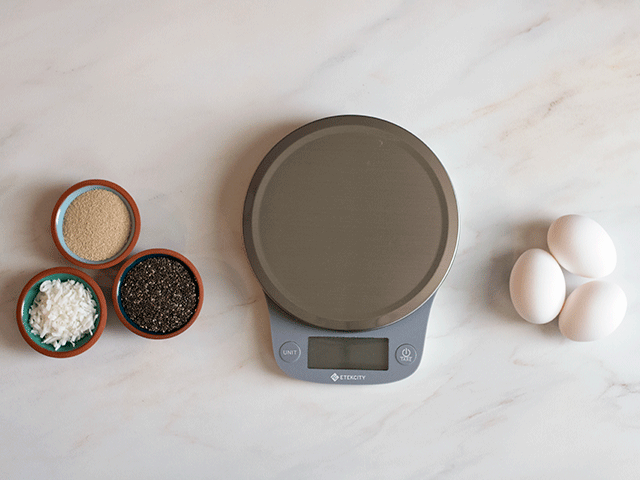
I’m not a professional baker. I bake from home during my spare time. But some of the recipes I come across are for bakers who bake in bulk. They sometimes make 4 to 6 loaves at a time, or more.
Even if I had neighbors requesting that much bread from me, my oven only fits two Dutch ovens. At most, I make two loaves at a time, maybe four if I’m making sandwich bread. On average, however, I make one loaf a week. I don’t need recipes so large.
With baker’s percentages, I can use a little math to scale my recipe up or down to fit my needs. If a recipe is too big, I can calculate what would I would need to make a single loaf. If a recipe is meant for a small boule and I want something large, I can make it bigger to feed my family.
Better still, when I deal with grams rather than teaspoons and cups, I don’t have to worry about odd leftover fractions. No need to measuring out 1/3 cup and 1 tablespoon and 1/8 teaspoon to be precise. Just pop my ingredient on a scale and go by weight.
You Can Add or Remove Ingredients
Baker’s percentages allow for some creativity and customization. Although I’m still learning how to manipulate recipes I find, baker’s percentages let me add or remove ingredients without affecting the overall texture and volume of the bread itself.
Don’t like nuts and seeds in your bread? A little math and you can get rid of them. Want to add in some olives and cheese to your bread? Baker’s percentages let you do that, too. Baker’s percentages take out the guesswork in your baking.
How Do You Calculate a Baker’s Percentage?
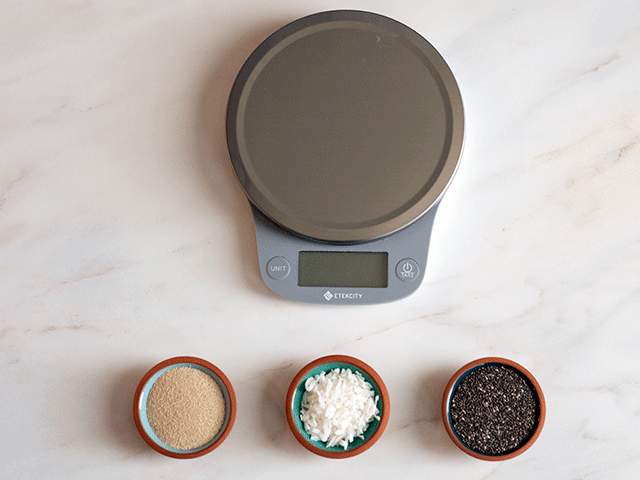
Calculating a baker’s percentage for a recipe does involve a bit of math. But once you get the hang of it, you can follow the same format for a variety of recipes. And you’ll have an easier time changing your recipes to better suit your needs and preferences.
Here’s A Basic Example
To help you better understand how a baker’s percentage works, I’m going to walk you through a basic example. Here’s my recipe for White and Wheat Artisan Sourdough Bread:
- 350 Grams (3 Cups) All-Purpose Flour
- 50 Grams (1/2 Cup) Whole Wheat Flour
- 300 Grams (1 1/3 Cup) Warm Water
- 100 Grams (1/2 Cup) Sourdough Starter
- 8 Grams (1 1/3 Teaspoon) Sea Salt
Baker’s percentages work by establishing flour as 100%, so in this case, the All-Purpose Flour and the Whole Wheat Flour would equal 100%.
To start, we’d add all flour together:
- 350 Grams All-Purpose + 50 Grams Whole Wheat Flour = 400 Grams Flour
So, 400 Grams Flour = 100%.
From there, we take each ingredient and divide that number by grams flour to get their percentage.
- 300 Grams Water / 400 Grams Flour = 0.75 or 75% Hydration
- 100 Grams Starter / 400 Grams Flour = 0.25 or 25% Levain
- 8 Grams Salt / 400 Grams Flour = 0.02 or 2% Salt
And if we want to be a little more specific with the flours, you can do the math for that, too:
- 350 Grams All-Purpose / 400 Grams Flour = 0.87 or 87% All Purpose Flour
- 50 Grams Whole Wheat Flour / 400 Grams = 0.13 or 13% Whole Wheat Flour*
So there you have your basic baker’s percentages! Not so bad, right?
*Just to be clear, I did round up a little just to keep the numbers simple. Additionally, you should note that if you add all the percentages for every ingredient, they will add up to more than 100%.
How to Scale a Recipe
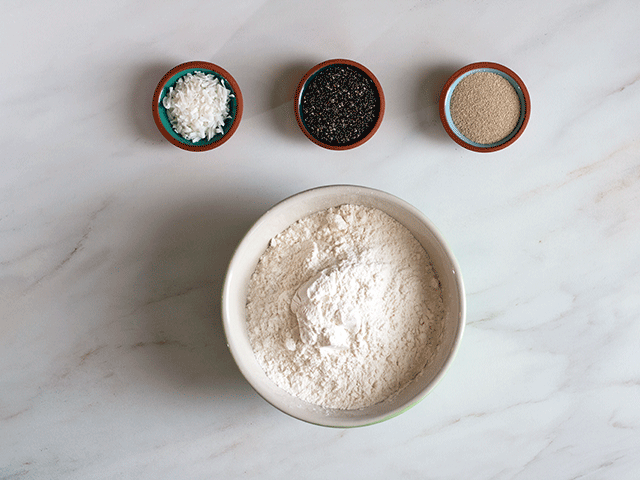
Once you know baker’s percentages for a recipe, you can easily scale a recipe up or down to fit your needs.
Let’s walk through scaling a recipe, and we’ll use the White and Wheat Bread recipe again. For this example, you want the loaf just a bit bigger because you like thicker slices for sandwiches, but you don’t want to double the recipe. Rather than making a 400 gram flour loaf, maybe you want a 500 gram flour loaf.
Since baker’s percentages work with flour weight, we’ll make that 500 grams equal to 100%. From there, we just do a little math to get the rest of the ingredients by weight.
- 500 Grams Flour X 75% Hydration (or 0.75) = 375 Grams Water
- 500 Grams Flour X 25% Levain (or 0.25) = 125 Grams Levain
- 500 Grams Flour X 2% Salt (or 0.02) = 10 Grams Salt
And let’s not forget to breakdown the different flours while we’re at it:
- 500 Grams Flour X 87% All Purpose (or 0.87) = 435 Grams All-Purpose Flour
- 500 Grams Flour X 13% Whole Wheat Flour (or the original 0.13) = 65 Grams Whole Wheat Flour
And now we’ve got a slightly bigger loaf without actually doubling the recipe. Instead of a 808 gram total (400 Gram Flour) loaf, you have a 1,010 gram total (500 Gram Flour) loaf.
How to Add or Remove Ingredients
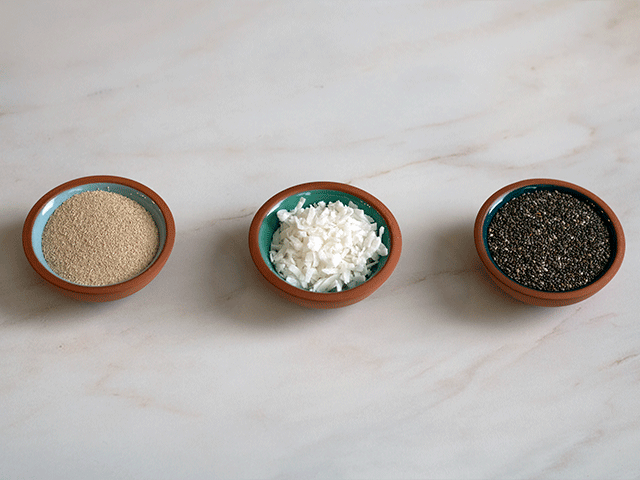
Once you’ve got the hang of baker’s percentages, you can open up your favorite recipes to customization. With a little math, you can add or remove ingredients to better suit your tastes and preferences.
Let’s go back to that scaled up White and Wheat Recipe example. This time, however, you want to add some sunflower seeds to the recipe because you happen to like them. You don’t want too many seeds, however. Just enough for the flavor to come across. And you don’t necessarily want to make your loaf any bigger now, or it might not fit in your banneton basket.*
So what do you do?
You keep the total weight of the loaf the same, and you keep the baker’s percentages the same so each ingredient has the same overall effect on the dough. When you add the seeds into the recipe, the weight of the original ingredients will go down proportionally to make room for the seeds.
Here’s how you do it.
First, you add up the total percentages of all the ingredients:
- 87% All-Purpose Flour + 13% Whole Wheat Flour + 75% Water + 25% Levain + 2% Salt +15% Sunflower Seeds = 217%
Don’t forget to include your new ingredient that you want to add. In this case, we included the sunflower seeds, which we set to 15% since that seemed like a fun amount of seeds for this experiment.
Next, you divide your desired yield by the percentage total:
- 1,010 Gram Total Loaf / 217% Total Ingredient Percentages = 4.65
And to make the math easier for us to do, let’s round up to an even 5%.
And, you multiply each ingredient by that new percentage total:
- 435 Grams All-Purpose Flour X 5% = 21.75 Grams
- 65 Grams Whole Wheat Flour X 5% = 3.25 Grams
- 375 Grams Water X 5% = 18.75 Grams
- 125 Grams Levain X 5% = 6.25 Grams
- 10 Grams Salt X 5% = 0.5 Grams
Then, you subtract those grams from your original total:
- 435 Grams All Purpose Flour – 21.75 Grams = 413.25 Grams All Purpose Flour
- 65 Grams Whole Wheat Flour – 3.25 Grams = 61.75 Grams Whole Wheat Flour
- 375 Grams Water – 18.75 Grams = 356.25 Grams Water
- 125 Grams Levain – 6.25 Grams = 118.75 Grams Levain
- 10 Grams Salt – 0.5 Grams = 9.5 Grams Salt
And let’s not forget those sunflower seeds! Since we now have a new flour total of 475 grams (All-Purpose and Whole Wheat flour combined), we can multiply that by our earlier 15%.
- 475 Grams Flour X 15% Sunflower Seeds = 71.25 Grams Sunflower Seeds
And assuming we did our math right, all of those new weights in grams should add up to our desired 1,010 gram yield loaf.
- 475 Grams Flour + 356.25 Grams Water+ 118.75 Grams Levain + 9.5 Grams Salt + 71.25 Grams Sunflower Seeds = 1,030 Grams
That’s pretty close to our original, but why is the total weight more? Because we rounded up from 4.65% to 5% for simplicity’s sake.
You can be more precise and exact with your math than I was with mine, but I think you’ll find that once you understand baker’s percentages, changing and adjusting recipes becomes a snap.
Do You Have Additional Questions?
I know baker’s percentages can seem confusing at first. If you have additional questions, let me know in the comments below, and I’ll do my best to answer them. If you want to see more baker’s percentages on my recipes, tell me and I’ll add them!
*As an Amazon associate, I earn a small commission for affiliate links. However, I only recommend products I use regularly and enjoy, and my opinions are my own.

